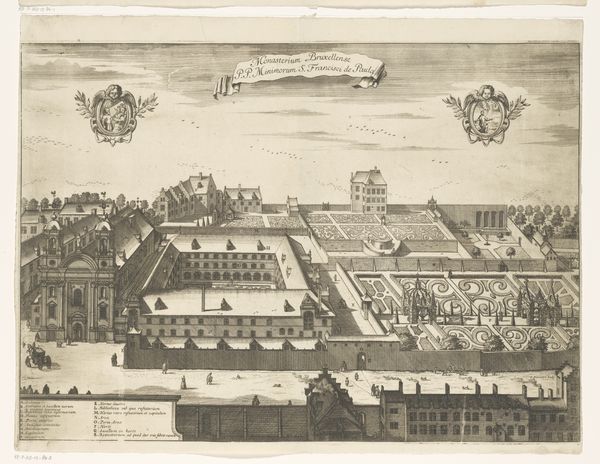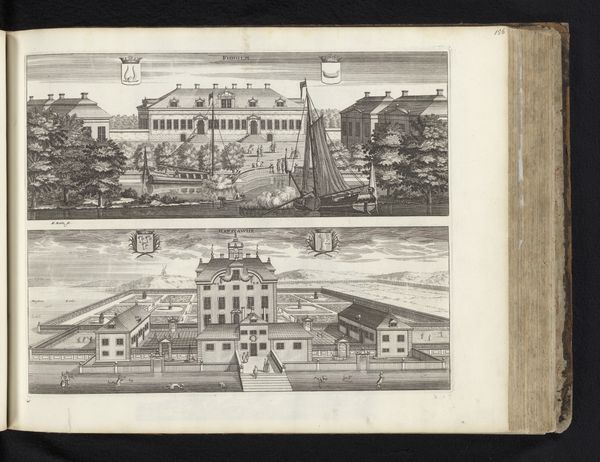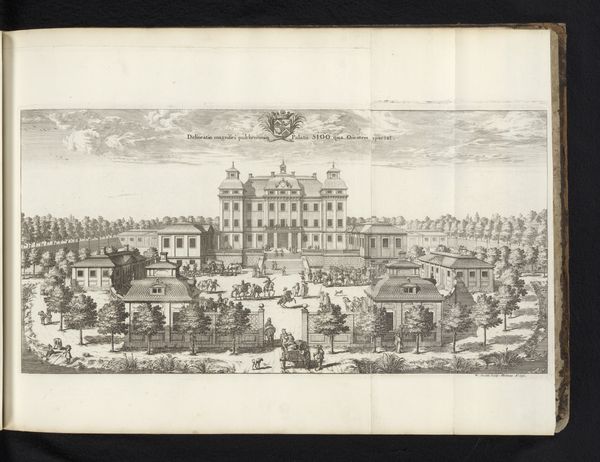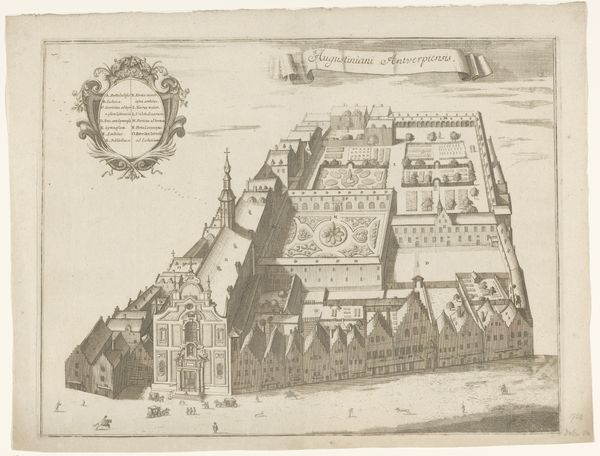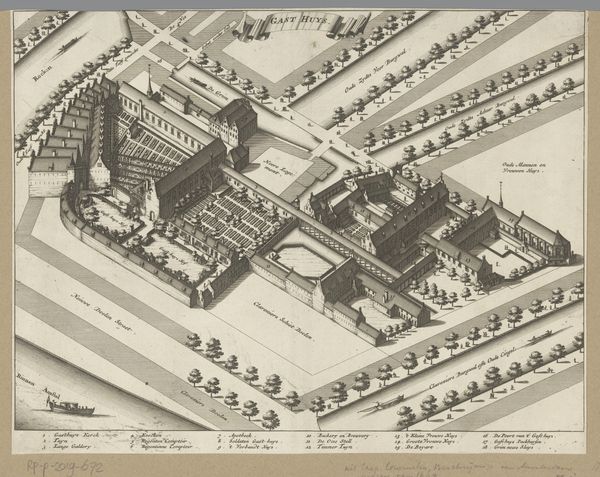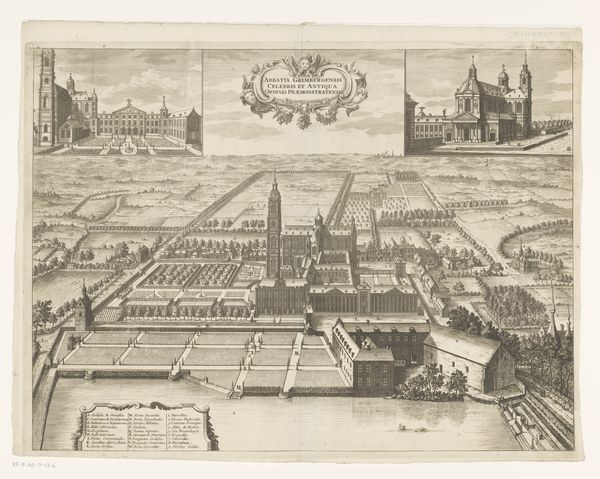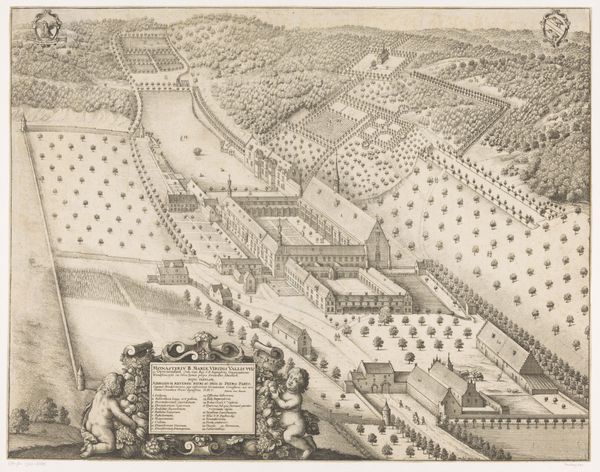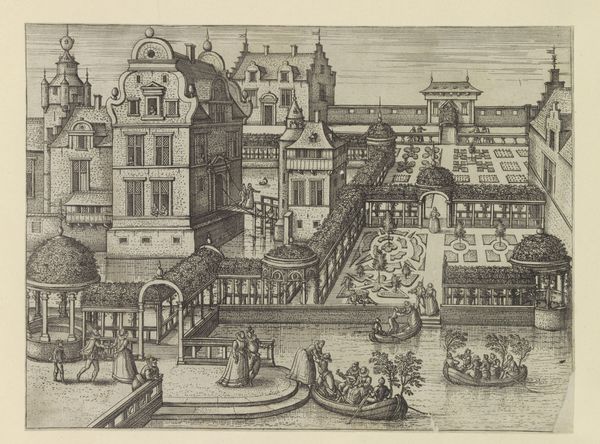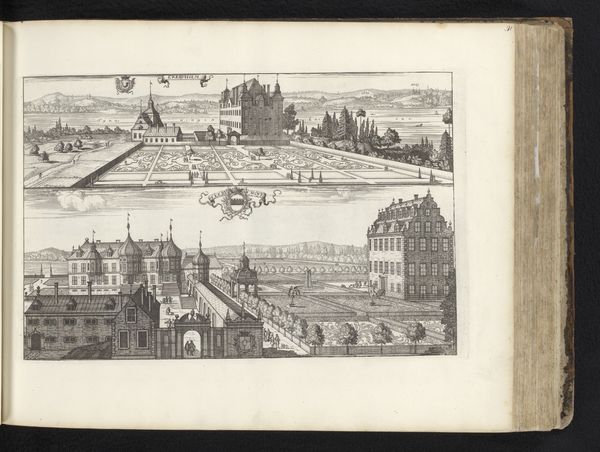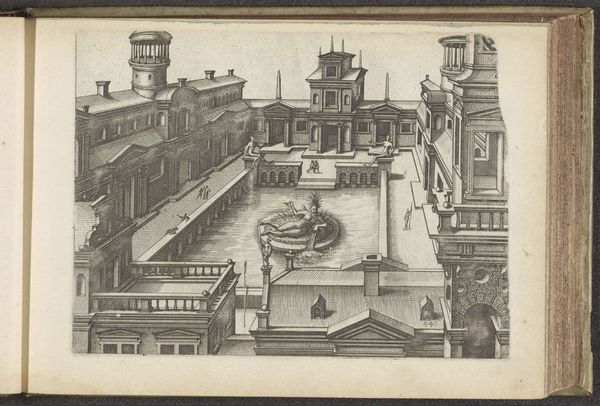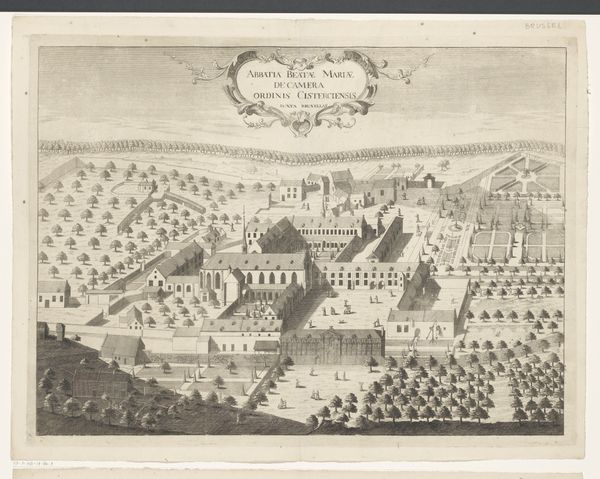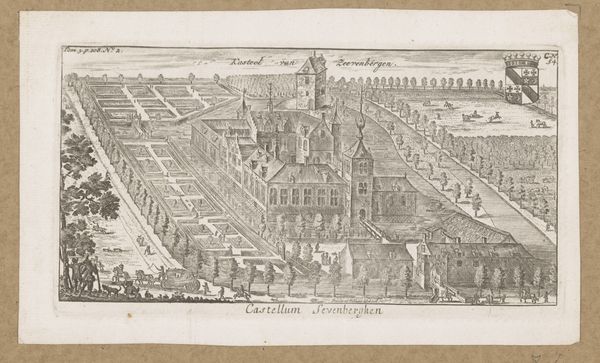
Speculum Romanae Magnificentiae: The Baths of Diocletian 1582
0:00
0:00
drawing, print, etching, engraving, architecture
#
drawing
# print
#
etching
#
landscape
#
italian-renaissance
#
engraving
#
architecture
Dimensions: sheet: 11 7/8 x 20 7/8 in. (30.2 x 53 cm) mount: 16 7/8 x 22 1/8 in. (42.8 x 56.2 cm)
Copyright: Public Domain
Editor: So this print, “Speculum Romanae Magnificentiae: The Baths of Diocletian,” by Giovanni Ambrogio Brambilla, dates back to 1582. Looking at this meticulously rendered plan, I am struck by the sheer scale of the baths, and all the detail in the etching and engraving! What does this print tell us about the culture of that time? Curator: The *Speculum Romanae Magnificentiae*, or “Mirror of Roman Magnificence”, was actually a publishing project of assembled prints that was produced specifically for public consumption. Rome, in the late 16th century, was invested in re-establishing its cultural authority on the global stage after significant religious and political upheavals. What do you think was one way of solidifying Rome’s central place? Editor: Showcase its ancient glory to emphasize how strong it was? Curator: Exactly. These prints made that happen. Think about who was viewing these. Largely tourists came to Rome seeking this history, but consider also that these prints travelled widely around Europe to elites and educated lay people. Editor: So they were spreading ideas about Rome’s importance? Curator: Yes, precisely. They served as both historical record and promotion of the city. This print shows the Baths of Diocletian not just as ruins, but also speaks to a Roman origin and foundation with power, technological know-how, and control. So consider that this is a view constructed to influence public opinion and legitimize certain cultural values. Why is that important? Editor: Because then, we are able to unpack those narratives in a way that challenges authority, whether political, religious or academic? Curator: Well said. Thinking about this print as a tool for promoting a specific image of Rome really highlights the public role of art.
Comments
No comments
Be the first to comment and join the conversation on the ultimate creative platform.
